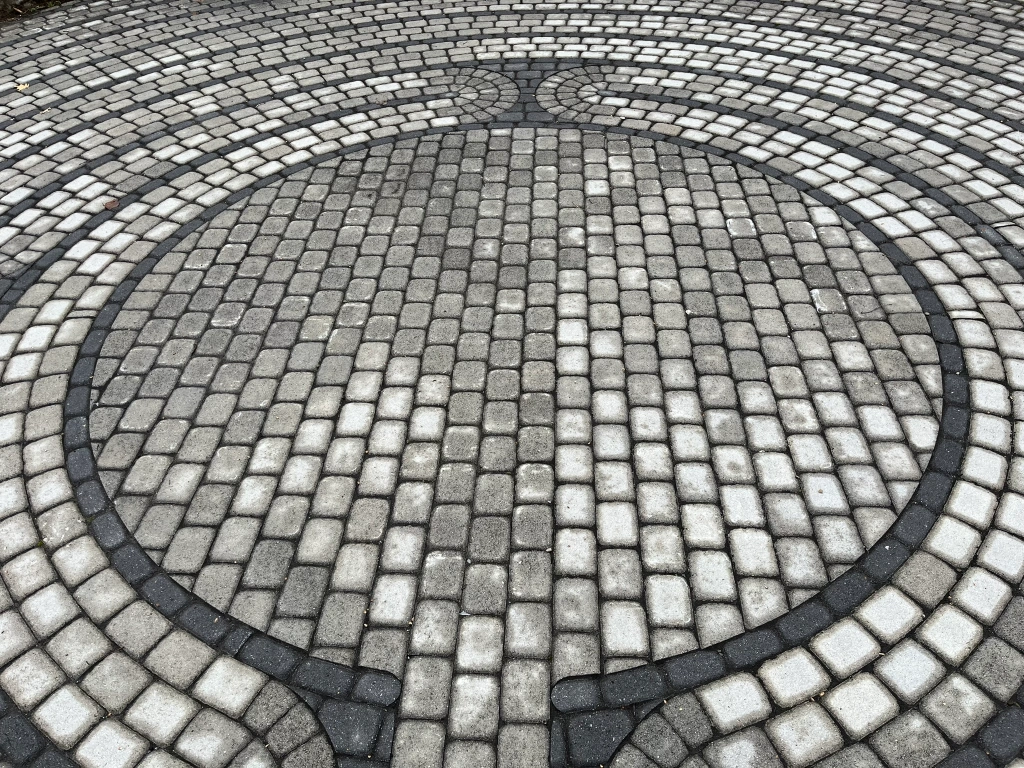This is an adapted version of the sermon I preached this morning, the Fifth Sunday in Lent. The gospel reading was John 11:1-45. If you would like to see this sermon, you can click here.
Our fifth Lenten discipline is repentance. And I need to define what that word means. We often think of the word repent as meaning “to be sorry for” or “to promise to do better.” And while that can be part of it, the deepest meaning of the word repent is “to turn around.” When we hear a prophet, or John the Baptist, or Jesus calling people to repent, they are calling them to turn around and go in a different direction. To turn our lives away from whatever is distracting us from God, and turn toward God. We are all so easily distracted, and God is always calling us to do that, beckoning us to come to where God is.
And that’s precisely what we see in our gospel reading today. In our gospel reading today, Jesus calls people to go to where he is, and where he is is the place of death.
That might surprise you. We don’t like talking about death. In fact, in our culture today we have a fear of death, and a fear of talking about it. And it’s no wonder: for many of us, nobody has ever taught us how to deal with death. And it can make us very uncomfortable.
So often we walk through the line at a viewing, and have no idea what to say to the family at the casket. We don’t know the words. And sometimes we’re scared that if we say the wrong thing, it will make it worse. Some of us avoid viewings and funerals for precisely that reason. Think of the words we use – many people avoid the word funeral, preferring “celebration of life.” We avoid the word died, preferring to say that someone “passed away.” There is a trend now of people not even having any services for their loved ones. Even in the church, in the place where we proclaim faith that death is not the end, death is still scary, and we often don’t know what to do around it.
Death is uncomfortable. Disturbing. I’m not trying to scold anyone for how they feel. But I think it’s important to recognize how deeply disturbed and uncomfortable we are around the subject.
But death is real. Many of you have experienced deep, deep grief in your life. Some of you are experiencing that right now. And one of the few guarantees we have in life is that every single one of us will one day die. It may be uncomfortable and disturbing, but it is true.
And death isn’t just about the moment when we stop living. It’s also something we experience throughout our lives, whenever we endure a loss of any sort. When a loved one dies, we experience a death in ourselves as well. When we lose a job, we experience a death in ourselves. When a relationship ends, we experience a death in ourselves. Even good things in our lives can bring death. I remember when Heather and I were expecting our first child. I was terrified, partially because so much was unknown, and partially because I knew that a part of me was dying – I would not be the same anymore. Any significant change brings us in the face of death and grief. We experience death and grief in so many ways.
And if you’re uncomfortable right now, hearing me talk like this, that’s okay. It’s okay to be uncomfortable. If it’s too much, and you have to get up and leave the room, I understand. But if you can, I encourage you to live with the discomfort and listen, because I believe there is good news ahead.
So let’s look at today’s gospel, a story tinged throughout by death. Let’s look at Jesus The first thing Jesus does is wait. Jesus got a message that his friend Lazarus was ill, and instead of rushing to be with him, perhaps to heal him, Jesus waited. This must have been hard for him, because we are told that he loves Lazarus. Yet he waited. He waited until he knew that Lazarus was dead to even begin the journey to Bethany.
And then, he called his disciples to go with him, to the place where Lazarus died. In fact, he told his disciples that he is glad he waited, for their sake. Perhaps he did this to help those around him to experience death. Sounds odd, I know. But let’s follow him.
The disciples hesitated at first. They balked at his calling. One said, “We shouldn’t go there. People are trying to stone you there.” One said, “Maybe Lazarus is just sleeping. He’ll be alright.” Thomas was sarcastic, and said, “Oh great, let’s go there and die with him.”
But they went. They followed Jesus. Let’s follow him too.
When they arrived, Jesus met Martha and Mary, Lazarus’ sisters. John tells us that they came out to meet Jesus. In their grief, Martha and Mary moved away from the tomb, away from the place of death, to meet Jesus outside. That is a natural thing to do. We might all do the same. But Jesus called them to turn around, to go back toward the tomb. He called them to turn around, and led them to face their brother’s death with no filters. It was hard for them. “I know he’ll rise again someday,” Martha said. “No, Martha,” Jesus responded. “I am the resurrection and the life.” When Jesus told the people to take away the stone, Martha said, “No, Lord, there’s already a stench!” Jesus gently insisted.
Martha, Mary, and the disciples had the natural inclination to go away from death, to get away from its pain, its aura, its domain. But Jesus called them to turn around, and go there. And he accompanied them there.
And then, this happened:
Jesus cried with a loud voice, “Lazarus, come out!”
And the dead man came out, his hands and feet bound with strips of cloth, and his face wrapped in a cloth.
It is as if Jesus called out to him, four days in the grave, “Lazarus, turn around!” And Lazarus turned around, and came back to the land of the living.
And that is what Jesus does in this story: he calls the living to come closer to the dead, and calls the dead to come to life.
Jesus calls the living to turn around from avoiding death, to repent from avoiding death. And he calls the dead to turn around from death, to repent and come to life.
I believe this is what Jesus does throughout his ministry – and even to his own death. Look at this image:

This is the ninth station of the cross at Prince of Peace, entitled, “Jesus falls the third time,” painted by Kim Jennings. In it, I see Jesus moving step by step toward his own death, knowing that he had the ability to avoid it, in fact a part of him very much wanting to avoid it, but also knowing that this was where he needed to go. And even while he was going there, heading directly toward death, look at what surrounds him. I see those multicolored shapes in Kim’s image as rays of light shining out from Jesus. Rays of light shining out as he is transforming death into life. Rays of life filling the world, filling even you and me.
And remember the song we sang before the sermon today:
For us he rose from death again;
for us he went on high to reign;
for us he sent his Spirit here
to guide, to strengthen, and to cheer.
Death did not stop him. Death did not contain him. Death did not win. Jesus transformed death into life, and rose again. Jesus transformed death into life and sent his Spirit, a Spirit whom he is still sending to us now, the Holy Spirit who still calls us today to turn around and walk toward the places of death, toward the people who are caught in death’s grip. We don’t need to be afraid. And just as Jesus did not send Mary or Martha or the disciples alone, the Spirit accompanies us today.
And just as Jesus transformed the death of Lazarus into life that day 2000 years ago, the Spirit of God is still transforming death to life today, calling to all those who know death’s grip to turn around, inspiring and filling them and pouring life into them. And there, as the living are called to the place of the dead, as the dead are called to life, there in the middle between death and life, we meet one another.
Right where Jesus is. Jesus is in the place between death and life, making it holy, transforming death into life. Right there waiting with us, sheltering us, inspiring us, bringing us together.
The Holy Spirit calls us to draw closer to where death is, not to be afraid, because death is where Jesus is. And the Holy Spirit calls those of us who know death right now to come to life, because life is who Jesus is.
I am the resurrection and the life, Jesus said. Those who trust in me, though they die, will live. And everyone who lives and trusts in me will never die.
Wherever you are in your life right now, however much life or death you are experiencing, turn around and trust in Jesus. Turn around, for Jesus is there. Jesus is calling you, and promising to go with you. We have nothing to fear. Nothing at all. Jesus is here. Jesus is life.
Featured Image by Dorothée QUENNESSON from Pixabay




Leave a comment